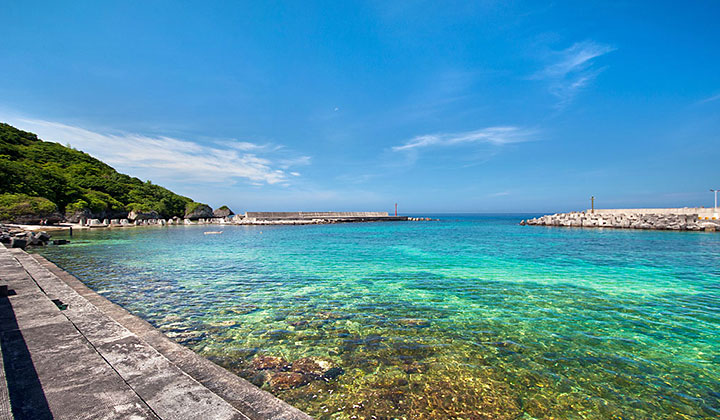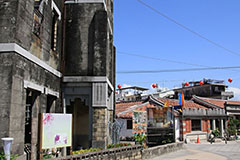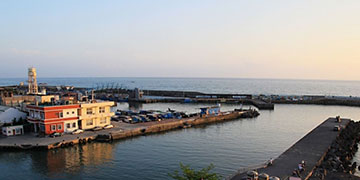          |
|
|
Pingtung Taiwan's southernmost county, Pingtung covers a long and narrow territory with a border defined by mountains to the north, the Pacific Ocean to the east, the Taiwan Strait to the west, and the Bashi Channel to the south. Due to its subtropical location, Pingtung enjoys spring-like weather all year round. Graceful coconut trees add to the county's ample South Pacific charms. Pingtung is home to Kenting National Park, Taiwan's first National Park. Other visitor attractions here include the island Eden of Xiaoliuqiu, scenic forest-hemmed highways, Dapeng Bay National Scenic Area, Maolin National Scenic Area, and Taiwan's best paragliding area, Saijia Air Park. Coastal areas in Pingtung are excellent choices for coastal recreation, whether donning a snorkel to explore the beauty of the corals or hunting for shells on the beach. At Eluanbi, marking the southernmost tip of Taiwan, you can enjoy the unusual sight of the Pacific to the left and the Taiwan Strait to the right. Pingtung is also a wintering stop for migratory birds, including shrikes, and in October, gray-faced buzzards, making this a good spot to enjoy the avian ecology. And if you like to gaze at the stars, the light-pollution free night skies over the Pingbei foothills offer the perfect tapestry to indulge. The local indigenous culture is also well worth experiencing.  Kenting National Park
Kenting National ParkThe centerpiece of the Hengchun Peninsula is Kenting(Kending) National Park, Taiwan's only tropical national park. Established in 1982, Kenting(Kending) National Park covers a total area of 33,268 hectares of land and maritime environments. This is Taiwan's most densely populated national park, and it includes large stretches of agricultural land's providing visitors with a view of typical Taiwanese rural life. In addition, the national park includes mountains, forests, pasture, lakes, sand dunes, beaches, and coral reefs imply everything you could desire when you want to get up front and personal with Mother Nature.1 Little Liuqiu Little Liuqiu is the general name of Liuqiu Island, which has has a diverse natural ecology and plenty of beautiful coastal views. The amazing rocks in different sizes and shapes make its scenery even more charming. People are simple and honest here. Temples are everywhere, and graceful old houses abound. A leisurely fishery village it is. There are no traffic lights at all on this island. Pace of life is slow and free. No big budget is needed to enjoy this island of diverse ecology, authentic culture, and LOHAS life. It is pretty convenient to get to the island, too.2   The Old House of Siiao Family at Ziadong
The Old House of Siiao Family at ZiadongThe Old House of the Siiao Family at Ziadong was built in the Siian-Fong time of the Ciing Dynasty. The family's 19th generation ancestor came to Taiwan and got rich as a businessman and hired Chinese craftsmen to build a mansion similar to that in his home town, Mei County of Guang-Dong Province. All building materials were imported from China. It is a house with a double courtyard, the so-called Hakka enclosed house. Both the structure and the detailed ornaments have been well planned. The house doesn't only have the typical beauty of a Hakka Building; some parts are also in the Ho-Lo style. It is one of the existing five block houses, which are rare in Taiwan. It is now listed as a national third class historical site.3 Taiwan Indigenous Culture Park To preserve aboriginal culture and resources, the government established Taiwan Indigenous Culture Park in Pingtung County in 1987. The park is 82.65 hectares in area, presenting each of the aboriginal tribes and their characteristics. The park is next to Fugu Bay, which as a natural and graceful scenery. There are no modern architectures in the vicinity. The Taiwan Indigenous Peoples Cultural Park has traditional tribal cabins, which are located according to each tribe's tradition and lifestyle. There are a wax figure room, a multimedia room and an exhibition room in the park, presenting the development and culture of the aboriginal tribes. The handicraft room shows how the aborigines create their unique handcrafts.4   Fangliao Fishing Port
Fangliao Fishing PortFangliao Fishing Port was once packed with tons of bamboo rafts used for fishery product pick-ups. Drifting rafts moved along with the waves like humming a song in its wait for the next pickup. Although Fangliao Fishing Port has expanded to today's scale and was promoted to Second Grade Port in 1996, the development did not affect the Port's unsophisticated and serene atmosphere. With mature fish aquaculture technology and aquaculture area reaching 650 acres, up to 30 species of fishes with high economic values are raised in Fangliao. In addition to various seafood cuisines offered by seafood restaurants located on the fish village street, treats such as fried fish larvae cake, thick fish larvae soup and fish larvae soup are also common. Fangliao District Fishermen's Association also offers direct selling seafood supermarket with diverse, fresh and cheap seafood sold by the fishermen for those who wish to purchase fresh seafood.5
1content & image resource: http://eng.taiwan.net.tw/m1.aspx?sNo=0002122&id=421
2content & image source: http://eng.taiwan.net.tw/m1.aspx?sNo=0002122&id=R30 3content & image resource: http://i-pingtung.com/en-us/Attractions/Detail/514/The-Old-House-of-Siiao-Family-at-Ziadong 4content & image source: http://eng.taiwan.net.tw/m1.aspx?sNo=0002122&id=R57 5content & image resource: http://i-pingtung.com/en-us/Attractions/Detail/507/FangLiao-Fishing-Port |